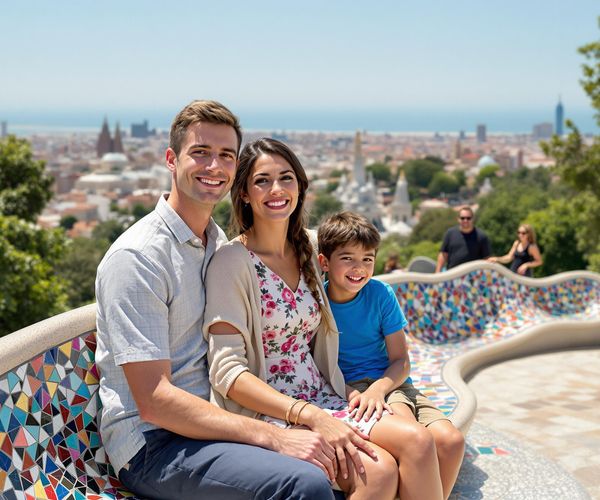
Barcelona: The Heartbeat of Catalonia
Discover Barcelona: A vibrant blend of gothic and modernist architecture, rich cultural heritage, and culinary delights nestled between the mountains and the sea.
Barcelona, Spain's enchanting seaside city, is known for its unique blend of modernist and gothic architecture, sun-drenched beaches, and vibrant cultural scene. The city is a mecca for art and architecture lovers, with its most famous son, Antoni Gaudí, having left a surreal and stunning mark on the cityscape. From the towering Sagrada Família to the whimsical Park Güell, Gaudí's masterpieces are scattered throughout the city, offering a feast for the eyes and soul. Wandering through the labyrinthine streets of the Gothic Quarter, you will find yourself transported back in time. This historic neighborhood, filled with narrow medieval streets, opens up to beautiful squares and hidden treasures. The Gothic Quarter is a living museum, where each corner holds centuries of history, from ancient Roman walls to medieval cathedrals. No visit to Barcelona would be complete without indulging in its culinary delights. The city's markets, such as the famous La Boqueria, are bursting with fresh produce, seafood, and local delicacies. Tapas bars and restaurants line the streets, offering a taste of Catalan cuisine that is both traditional and innovative. From the bustling La Rambla to the serene beaches of Barceloneta, Barcelona invites you to explore its many layers and discover a city that is as dynamic as it is historic.
Local tips in Barcelona
- Buy tickets in advance for popular attractions like Sagrada Família and Park Güell to avoid long queues.
- Explore the city on foot or by bike to truly soak in its beauty and discover hidden gems.
- Visit the local markets early in the morning for the freshest produce and a more authentic experience.
- Take a stroll down La Rambla, but be mindful of pickpockets in this busy area.
- Try to learn a few basic phrases in Catalan to show respect for the local culture.
- Enjoy a beach day at Barceloneta, but consider visiting the less crowded beaches further along the coast.
- Check out the local festivals and events, such as La Mercè, to experience Barcelona's vibrant cultural scene.
Neighbourhoods in Barcelona
Barcelona: The Heartbeat of Catalonia
Barcelona, Spain's enchanting seaside city, is known for its unique blend of modernist and gothic architecture, sun-drenched beaches, and vibrant cultural scene. The city is a mecca for art and architecture lovers, with its most famous son, Antoni Gaudí, having left a surreal and stunning mark on the cityscape. From the towering Sagrada Família to the whimsical Park Güell, Gaudí's masterpieces are scattered throughout the city, offering a feast for the eyes and soul. Wandering through the labyrinthine streets of the Gothic Quarter, you will find yourself transported back in time. This historic neighborhood, filled with narrow medieval streets, opens up to beautiful squares and hidden treasures. The Gothic Quarter is a living museum, where each corner holds centuries of history, from ancient Roman walls to medieval cathedrals. No visit to Barcelona would be complete without indulging in its culinary delights. The city's markets, such as the famous La Boqueria, are bursting with fresh produce, seafood, and local delicacies. Tapas bars and restaurants line the streets, offering a taste of Catalan cuisine that is both traditional and innovative. From the bustling La Rambla to the serene beaches of Barceloneta, Barcelona invites you to explore its many layers and discover a city that is as dynamic as it is historic.
When is the best time to go to Barcelona?
Iconic landmarks you can’t miss
La Sagrada Familia
Discover the enchanting La Sagrada Familia, a UNESCO World Heritage site and a brilliant example of Antoni Gaudí's architectural genius in Barcelona.

Park Güell
Discover the vibrant artistry and breathtaking views of Park Güell, a unique architectural masterpiece in Barcelona, perfect for all travelers.
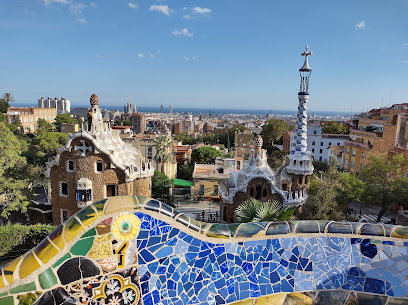
Plaça de Catalunya
Discover the vibrant heart of Barcelona at Plaça de Catalunya, where culture, history, and modern life converge in an unforgettable square.
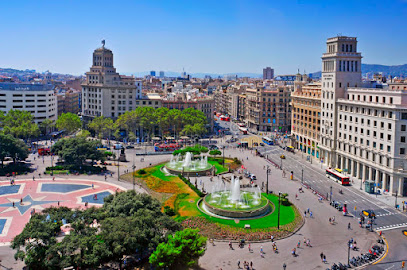
Casa Batlló
Discover the whimsical architectural wonder of Casa Batlló, a UNESCO World Heritage site in the heart of Barcelona, showcasing Gaudí's unparalleled creativity.
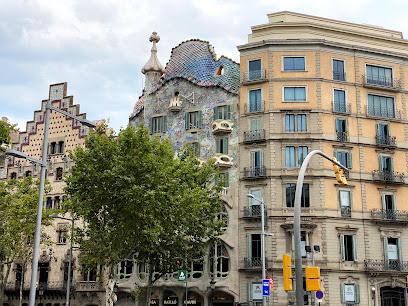
La Pedrera-Casa Milà
Discover the enchanting La Pedrera, a UNESCO World Heritage site showcasing Gaudí's revolutionary architectural style and rich cultural history in Barcelona.

Arc de Triomf
Discover the stunning Arc de Triomf, a historical monument in Barcelona, showcasing architectural beauty and vibrant city life.
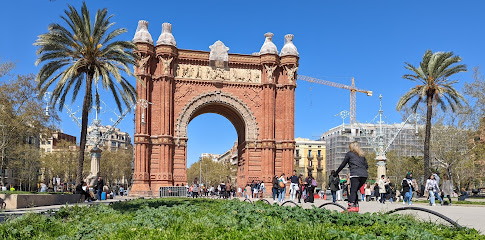
Ciutadella Park
Explore the vibrant greenery and rich culture of Ciutadella Park, Barcelona's beloved urban oasis filled with beauty and history.

Cathedral of Barcelona
Explore the breathtaking Gothic architecture and serene atmosphere of the Cathedral of Barcelona, a must-visit landmark in the heart of the city.

Palau de la Música Catalana
Experience the enchanting Palau de la Música Catalana, a magnificent concert hall and UNESCO Heritage site in Barcelona, showcasing stunning architecture and vibrant performances.
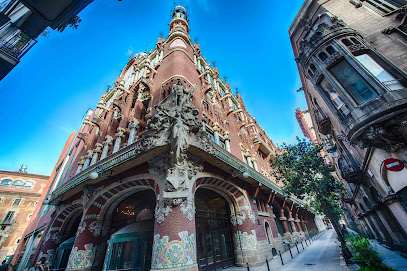
Columbus Monument
Discover the Columbus Monument in Barcelona: a historic tribute to exploration with stunning views and vibrant surroundings.
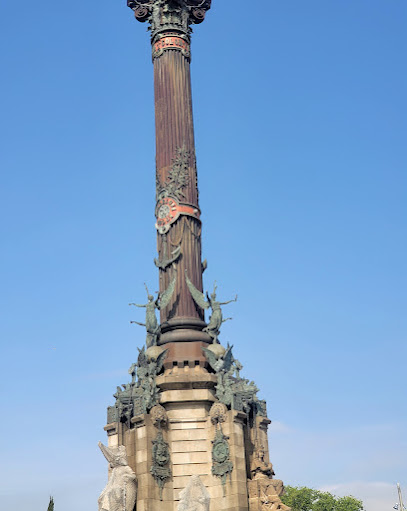
Basilica of Santa Maria del Mar
Explore the breathtaking Gothic architecture and rich history of the Basilica of Santa Maria del Mar, a must-see landmark in Barcelona's Ciutat Vella.
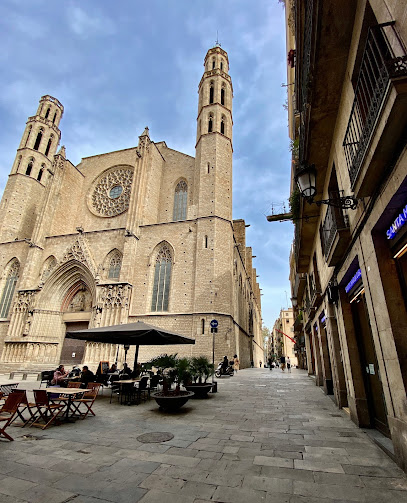
Poble Espanyol
Experience the essence of Spain at Poble Espanyol, an open-air museum showcasing stunning architecture and vibrant culture in Barcelona.
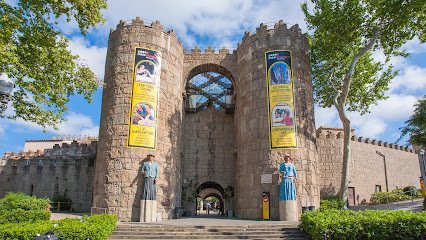
Picasso Museum
Explore Picasso's artistic journey at the Picasso Museum in Barcelona, showcasing an extensive collection of his iconic works in a stunning medieval setting.

Plaça Reial
Experience the charm of Plaça Reial, a historic plaza in Barcelona filled with vibrant energy, stunning architecture, and delicious culinary delights.

Güell Palace
Explore the exquisite Güell Palace, a UNESCO World Heritage site and a masterpiece of Gaudí's architectural brilliance in Barcelona.
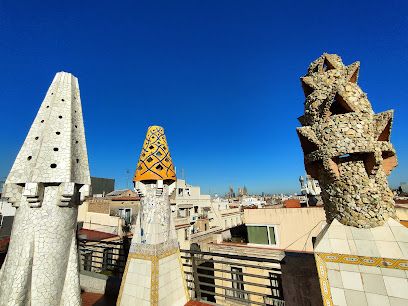
Unmissable attractions to see
Basílica de la Sagrada Família
Explore the breathtaking Basílica de la Sagrada Família, a masterpiece of Gaudí's architecture, and a must-visit icon of Barcelona's cultural heritage.
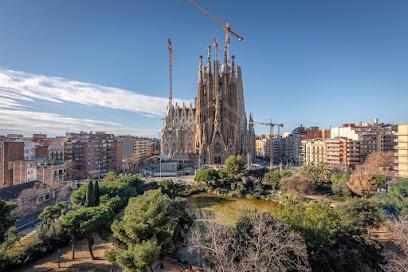
Park Güell
Experience the vibrant artistry of Park Güell in Barcelona, a UNESCO World Heritage site blending nature, architecture, and culture.
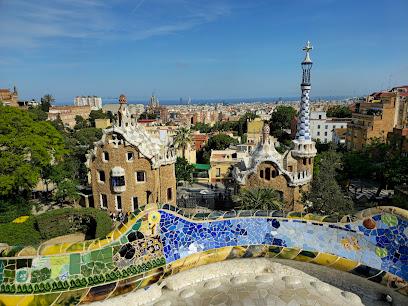
Plaça de Catalunya
Discover the vibrant heart of Barcelona at Plaça de Catalunya, a bustling square filled with art, culture, and local charm.
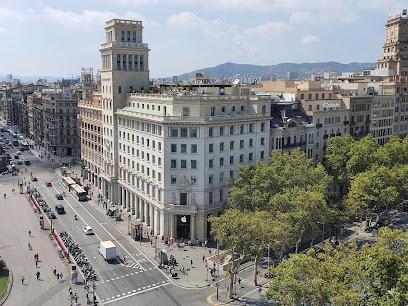
Casa Batlló
Discover the enchanting Casa Batlló in Barcelona, a masterpiece of Antoni Gaudí's architectural genius with vibrant colors and whimsical designs.
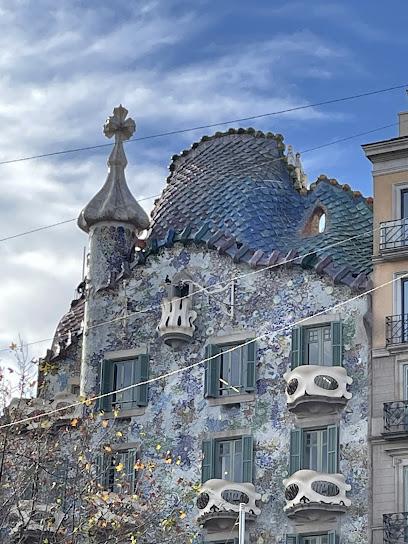
Spotify Camp Nou
Explore Spotify Camp Nou, the iconic home of FC Barcelona, for an unforgettable experience filled with football history and vibrant local culture.
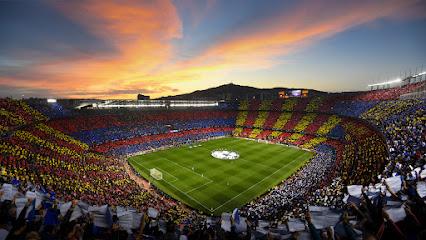
La Pedrera - Casa Milà
Discover La Pedrera - Casa Milà, an architectural masterpiece by Antoni Gaudí, where modernism meets nature in the heart of Barcelona.
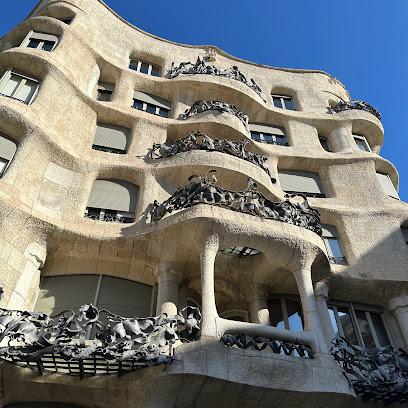
Magic Fountain of Montjuïc
Experience the mesmerizing light and music displays at the Magic Fountain of Montjuïc, an iconic Barcelona attraction that enchants visitors every night.
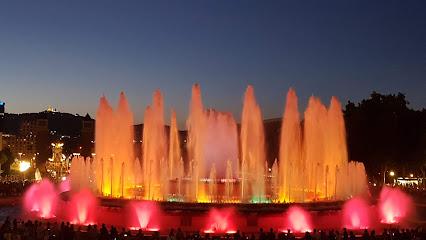
Ciutadella Park
Discover the enchanting beauty of Ciutadella Park, a vibrant green retreat in Barcelona where history and nature intertwine.

Cathedral of Barcelona
Discover the stunning Gothic architecture and rich history of the Cathedral of Barcelona, a must-visit landmark in the heart of Ciutat Vella.
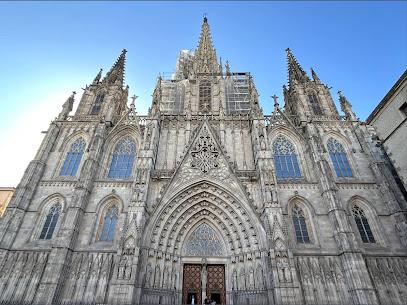
Aquàrium Barcelona
Explore the mesmerizing depths of Aquàrium Barcelona, where marine life comes alive in an unforgettable underwater adventure.
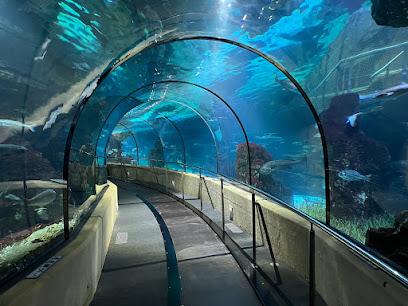
Recinte Modernista de Sant Pau
Explore the Recinte Modernista de Sant Pau, a UNESCO World Heritage site in Barcelona, showcasing breathtaking Art Nouveau architecture and rich cultural history.
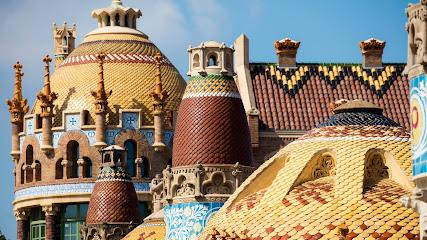
Montjuïc Castle
Discover Montjuïc Castle, a historic fortress in Barcelona with breathtaking views and rich cultural heritage, perfect for every tourist's itinerary.
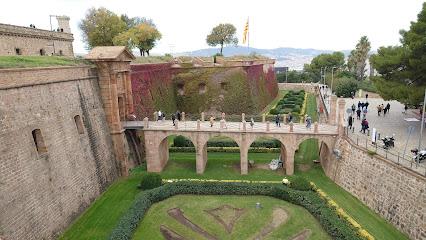
Plaça d'Espanya
Explore the vibrant Plaça d'Espanya in Barcelona, a stunning square surrounded by breathtaking architecture, cultural landmarks, and lively atmosphere.
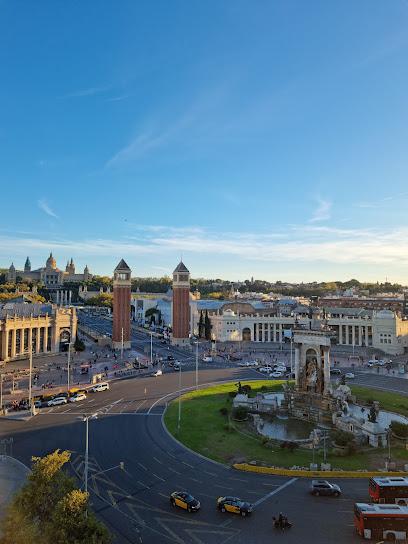
Santa Maria de Montserrat Abbey
Experience the spiritual and natural beauty of Santa Maria de Montserrat Abbey, a historic destination in Catalonia, Spain, that captivates all who visit.

Palau de la Música Catalana
Visit the Palau de la Música Catalana, a stunning concert hall in Barcelona, known for its breathtaking architecture and vibrant musical heritage.
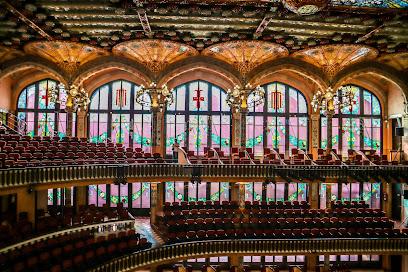
Essential places to dine
El Nacional Barcelona
Discover El Nacional Barcelona: A vibrant culinary experience featuring diverse Spanish dishes amidst elegant surroundings.
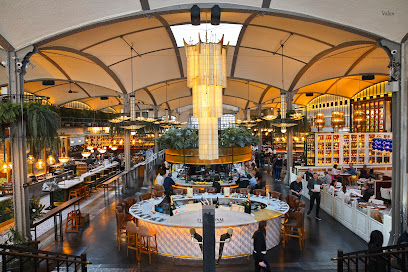
Casa Lolea Barcelona
Experience authentic Mediterranean cuisine at Casa Lolea in Barcelona; indulge in delicious tapas and unique sangria for an unforgettable dining experience.
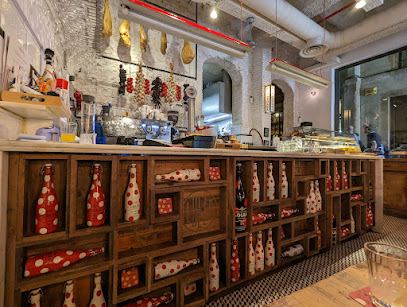
Milk Bar & Bistro
Discover Milk Bar & Bistro in Ciutat Vella: A delightful blend of brunch favorites and tapas in a cozy atmosphere.
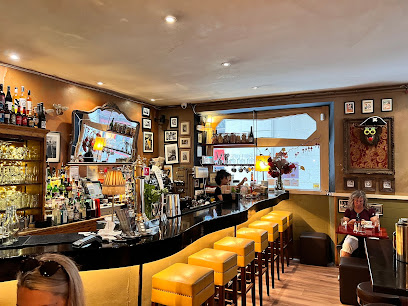
Arcano Restaurant
Discover authentic Mediterranean cuisine at Arcano Restaurant in Ciutat Vella, Barcelona – where tradition meets contemporary dining.
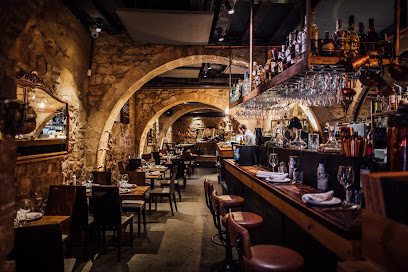
Viana Barcelona
Discover Viana Barcelona: where authentic Spanish flavors meet Mediterranean charm in Ciutat Vella.
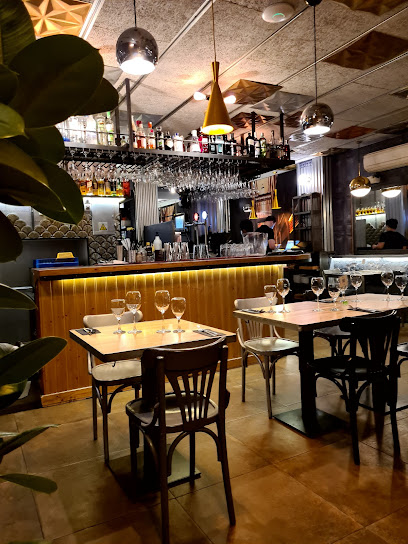
Disfrutar
Experience unparalleled fine dining at Disfrutar in Barcelona—where innovation meets tradition in every exquisite dish.
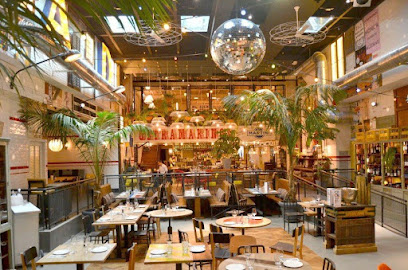
Cera 23
Discover authentic Spanish cuisine at Cera 23, where traditional flavors meet modern dining in the heart of Barcelona's Ciutat Vella.
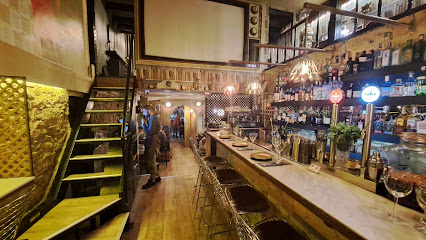
Paisano Bistró
Experience exquisite Italian and Mediterranean cuisine at Paisano Bistró in Barcelona's Eixample district, where health meets flavor.
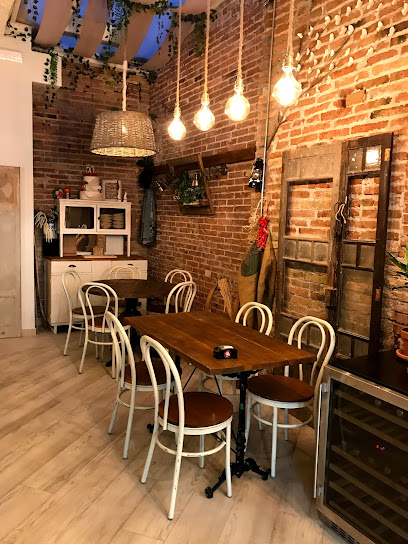
Doña Rosa - Cocina Urbana
Experience authentic urban cuisine at Doña Rosa in Barcelona's Ciutat Vella – where tradition meets modernity in every dish.
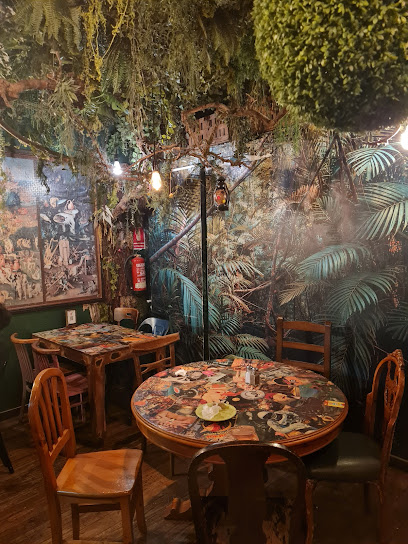
Picnic
Discover the best brunch at Picnic, where Mediterranean flavors meet local charm in the heart of Barcelona's Ciutat Vella.
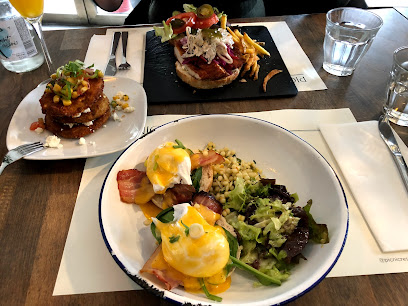
En Ville
Discover the best gluten-free Mediterranean cuisine at En Ville in Barcelona's historic Ciutat Vella district.
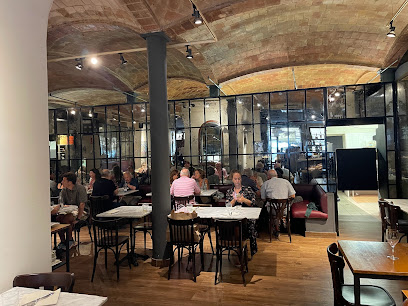
Elisabets Restaurant
Experience authentic Mediterranean flavors at Elisabets Restaurant in Barcelona's Ciutat Vella—your go-to destination for delicious tapas and warm hospitality.
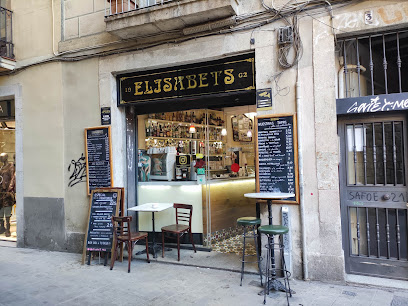
Restaurant Prado De Flores
Experience Mediterranean flavors at Restaurant Prado De Flores in Barcelona's Ciutat Vella, where culinary excellence meets vibrant cocktails.
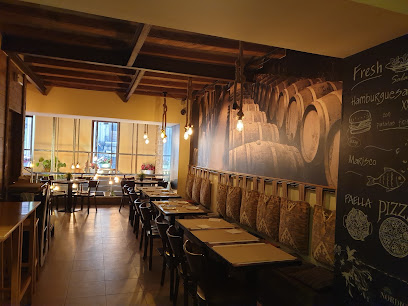
La Lluna
Experience authentic Mediterranean flavors at La Lluna in Ciutat Vella, Barcelona - where every meal tells a story of tradition and passion.

Musiu
Savor authentic Italian cuisine at Musiu in Barcelona's Eixample district—where every dish tells a story.
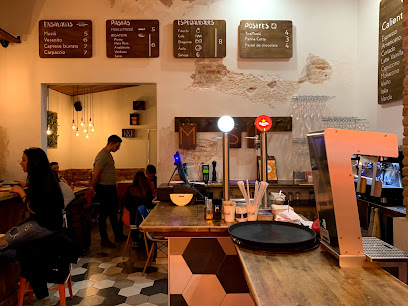
Markets, malls and hidden boutiques
Maremagnum
Explore Maremagnum, Barcelona's lively shopping mall featuring diverse stores, delicious dining options, and family-friendly entertainment by the waterfront.
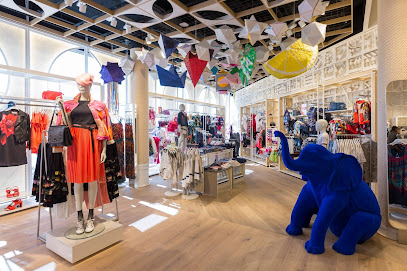
Urban Outfitters
Explore Urban Outfitters in Barcelona for trendy clothing, eclectic home goods, and a unique shopping experience in the heart of the city.
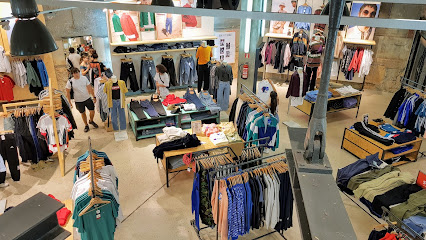
Reserva Natural Ibiza Barcelona
Explore an eclectic gift shop in Ciutat Vella, Barcelona, featuring costume jewelry, rock memorabilia, and unique treasures to take home.
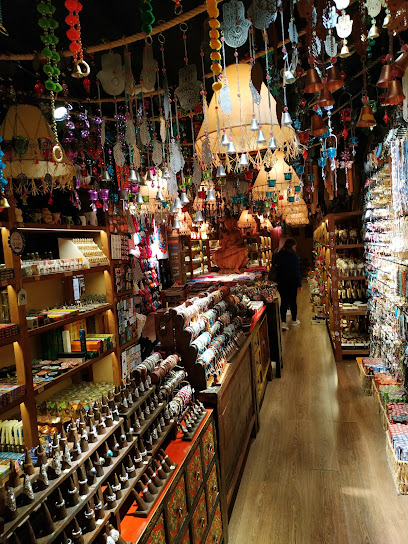
La Nostra Ciutat
Explore La Nostra Ciutat, a charming boutique in Barcelona offering unique gifts and local treasures that capture the essence of the city.

Grey Street
Uncover unique gifts, vintage clothing, and art supplies at Grey Street, a must-visit shop in the heart of Barcelona’s Ciutat Vella.

BLOCK SHOP Duc
Explore BLOCK SHOP Duc, the ultimate boutique for trendy streetwear in Ciutat Vella, Barcelona, where style meets urban culture.
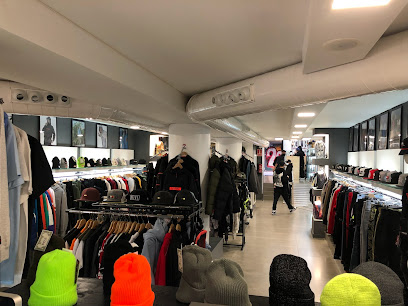
Holala! Plaza
Discover timeless fashion treasures at Holala! Plaza, Barcelona's premier vintage clothing store, offering a unique shopping experience in Ciutat Vella.
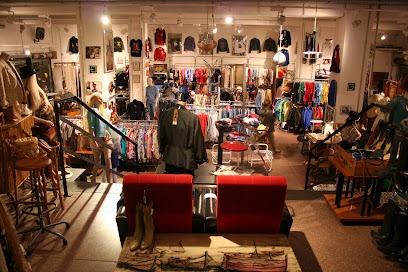
Nice Things Outlet Barcelona
Explore unique fashion at Nice Things Outlet Barcelona, where contemporary style meets local creativity in a vibrant shopping experience.
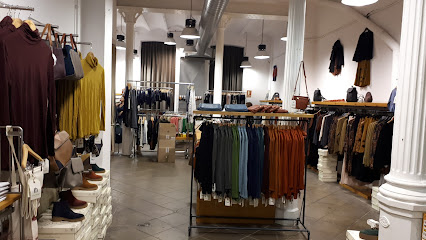
L'Arca @larcabarcelona
Explore L'Arca in Barcelona for exquisite vintage clothing, bridal wear, and unique fashion accessories in a charming boutique atmosphere.
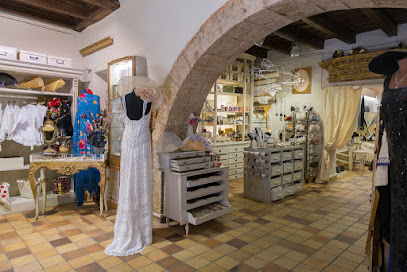
Holala! Tallers - unique vintage clothing for unique people
Discover unique vintage treasures at Holala! Tallers, where every piece tells a story in the heart of Barcelona's Ciutat Vella.

Soul Barcelona - Tienda de Moda Alternativa
Discover unique vintage styles at Soul Barcelona, a trendy alternative fashion store in the heart of Ciutat Vella, where every piece has a story.
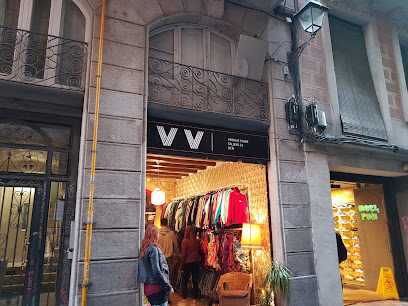
Lullaby Vintage
Explore Lullaby Vintage in Ciutat Vella, Barcelona - where unique fashion meets sustainability in a delightful shopping experience.
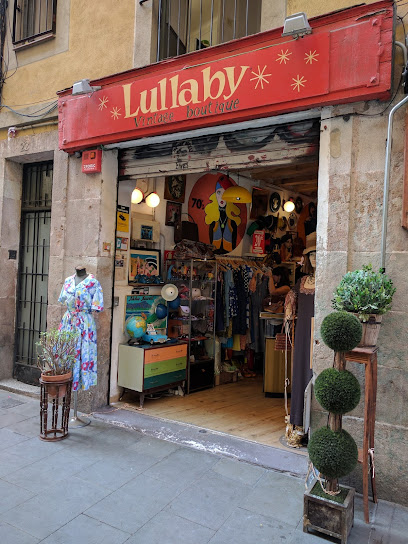
Souvenirs barcelona
Discover unique treasures and authentic souvenirs at Souvenirs Barcelona, where every item tells a story of the city's vibrant culture.
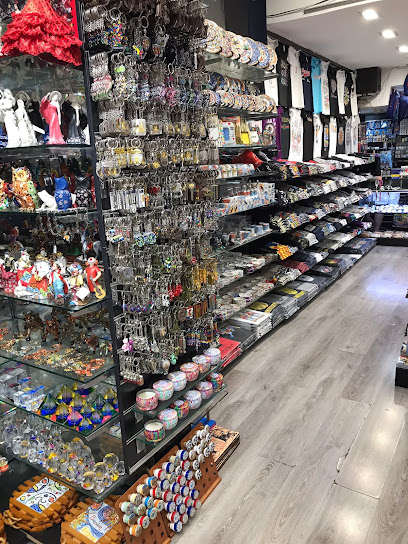
OMG BCN
Explore OMG BCN, a vibrant gift shop in Ciutat Vella, offering a curated selection of local art and unique souvenirs that capture Barcelona's spirit.
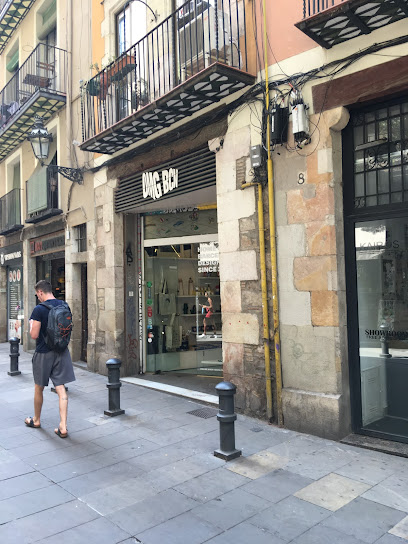
UNUSUAL* Concept Store Barcelona
Explore UNUSUAL* Concept Store in Barcelona for unique crafts, architectural salvage, and one-of-a-kind costume jewelry.
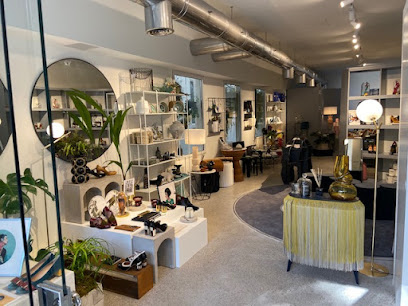
Essential bars & hidden hideouts
El Bosc de Les Fades
Experience the enchanting atmosphere of El Bosc de Les Fades, where magical decor meets delicious tapas and cocktails in the heart of Barcelona.
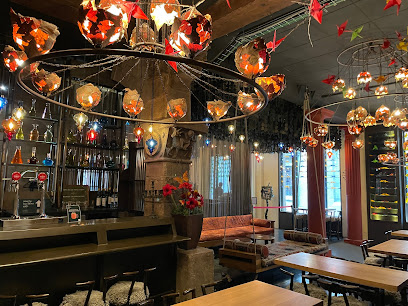
Mariposa Negra Cocktail Bar - Cocteleria artesana
Discover unique cocktails in handmade ceramic cups at Mariposa Negra Cocktail Bar, a vibrant escape in the heart of Barcelona's Ciutat Vella.
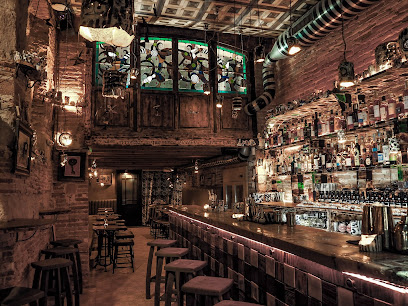
Dux Gin & Cocktail Bar Barcelona
Experience innovative cocktails and vibrant nightlife at Dux Gin & Cocktail Bar in the heart of Barcelona's Ciutat Vella.
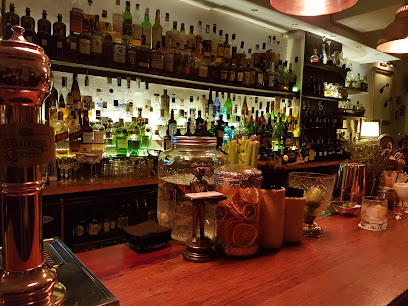
Boadas Cocktails
Discover Boadas Cocktails in Barcelona: where mixology meets history in an intimate setting for cocktail lovers.
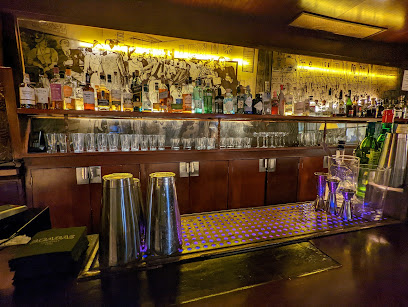
Bonavida Cocktail Bar
Experience the essence of Barcelona at Bonavida Cocktail Bar, where innovative cocktails and a lively atmosphere await you.
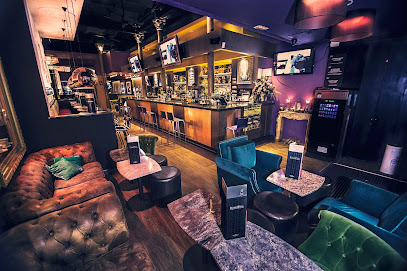
Monk Barcelona
Discover Monk Barcelona: Where innovative cocktails meet a unique ambiance in the heart of Ciutat Vella, perfect for an unforgettable night out.
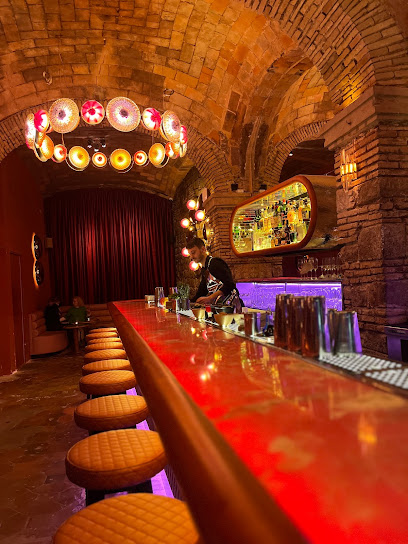
Bar Sincopa
Experience the lively atmosphere and delicious mojitos at Bar Sincopa, a vibrant bar in Barcelona's Ciutat Vella, perfect for an unforgettable night out.
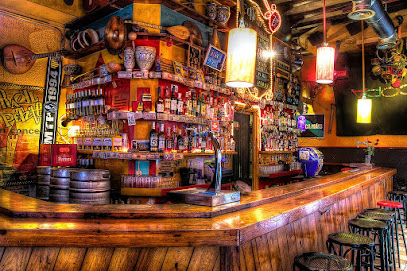
Bar Manchester
Experience Barcelona's nightlife at Bar Manchester, a retro bar in the Gothic Quarter, offering vibrant decor and a menu of delightful drinks.
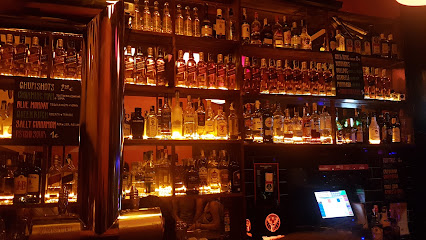
Hemingway Gin & Cocktail Bar
Experience Barcelona's nightlife at Hemingway Gin & Cocktail Bar, where expertly crafted cocktails and a sophisticated atmosphere await you.
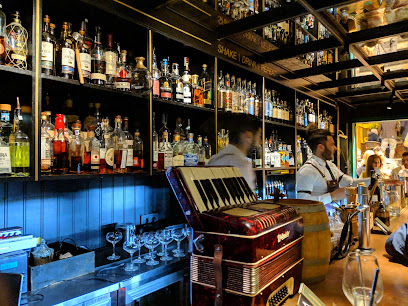
La Whiskeria
Experience the artistry of cocktails at La Whiskeria, Barcelona's premier cocktail bar, renowned for its innovative drinks and vibrant atmosphere.
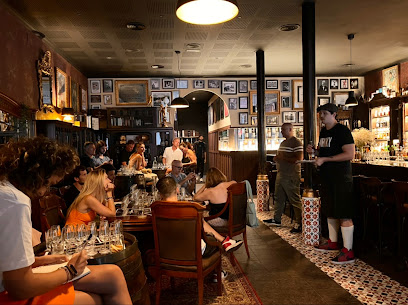
Bar Mariatchi
Discover the vibrant nightlife and handcrafted cocktails at Bar Mariatchi, a must-visit bar in the heart of Barcelona's Ciutat Vella.
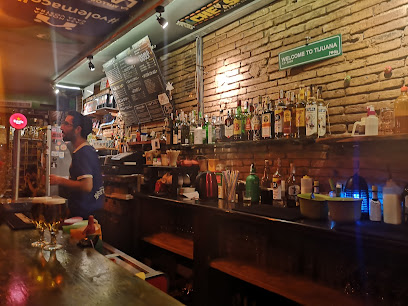
Les Gens Que J'Aime
Discover Les Gens Que J'Aime, Barcelona's premier cocktail bar, where creativity meets taste in a vibrant atmosphere.
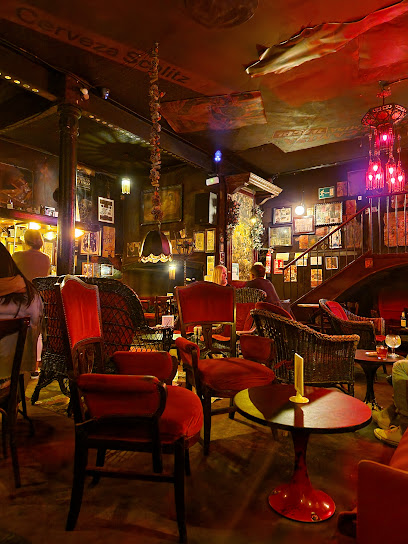
Tandem Cocktail Bar
Experience the artistry of mixology at Tandem Cocktail Bar, where each cocktail tells a story in the heart of Barcelona's Eixample district.
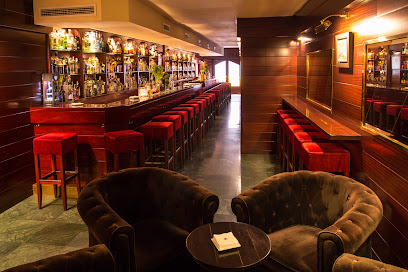
Farola Cocktail Bar Barcelona
Discover the vibrant nightlife at Farola Cocktail Bar in Ciutat Vella, Barcelona, where exquisite cocktails and live music create an unforgettable experience.
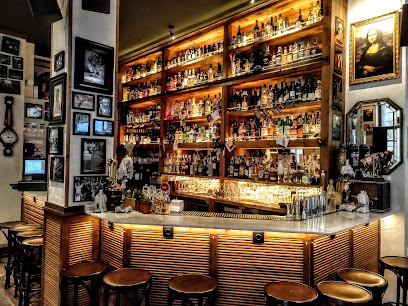
Ideal Cocktail Bar
Discover the Ideal Cocktail Bar in Barcelona's L'Eixample, where expertly crafted cocktails meet a vibrant atmosphere for an unforgettable night out.
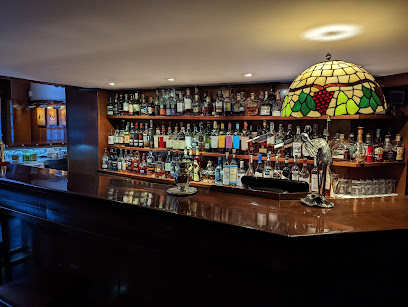
Travel experiences inspired by this city
Explore more travel diariesLocal Phrases
-
- HelloHola
[oh-lah] - GoodbyeAdiós
[ah-dee-ohs] - YesSí
[see] - NoNo
[noh] - Please/You're welcomePor favor/De nada
[por fah-vor/deh nah-dah] - Thank youGracias
[grah-thyahs] - Excuse me/SorryPerdón/Lo siento
[pehr-dohn/loh syen-toh] - How are you?¿Cómo estás?
[koh-moh ehs-tahs] - Fine. And you?Bien. ¿Y tú?
[byen. ee too] - Do you speak English?¿Hablas inglés?
[ah-blahs een-glehs] - I don't understandNo entiendo
[noh ehn-tyen-doh]
- HelloHola
-
- I'd like to see the menu, pleaseMe gustaría ver la carta, por favor
[meh goo-stah-ree-ah vehr lah kahr-tah, por fah-vor] - I don't eat meatNo como carne
[noh koh-moh kahr-neh] - Cheers!¡Salud!
[sah-lood] - I would like to pay, pleaseMe gustaría pagar, por favor
[meh goo-stah-ree-ah pah-gar, por fah-vor]
- I'd like to see the menu, pleaseMe gustaría ver la carta, por favor
-
- Help!¡Ayuda!
[ah-yoo-dah] - Go away!¡Vete!
[veh-teh] - Call the Police!¡Llama a la policía!
[yah-mah ah lah poh-lee-see-ah] - Call a doctor!¡Llama a un médico!
[yah-mah ah oon meh-dee-koh] - I'm lostEstoy perdido
[ehs-toy pehr-dee-doh] - I'm illEstoy enfermo
[ehs-toy ehn-fehr-moh]
- Help!¡Ayuda!
-
- I'd like to buy...Me gustaría comprar...
[meh goo-stah-ree-ah kohm-prahr] - I'm just lookingSolo estoy mirando
[soh-loh ehs-toy mee-rahn-doh] - How much is it?¿Cuánto cuesta?
[kwan-toh kwehs-tah] - That's too expensiveEs demasiado caro
[ehs deh-mah-syah-doh kah-roh] - Can you lower the price?¿Puedes bajar el precio?
[pweh-dehs bah-har ehl pree-seh-oh]
- I'd like to buy...Me gustaría comprar...
-
- What time is it?¿Qué hora es?
[keh oh-rah ehs] - It's one o'clockEs la una
[ehs lah oo-nah] - Half past (10)Y media (10)
[ee meh-dee-ah (dheez)] - MorningMañana
[mah-nyah-nah] - AfternoonTarde
[tahr-deh] - EveningNoche
[noh-cheh] - YesterdayAyer
[ah-yehr] - TodayHoy
[oy] - TomorrowMañana
[mah-nyah-nah] - 1Uno
[oo-noh] - 2Dos
[dohs] - 3Tres
[trehs] - 4Cuatro
[kwah-troh] - 5Cinco
[theen-koh] - 6Seis
[sehs] - 7Siete
[syeh-teh] - 8Ocho
[oh-choh] - 9Nueve
[nweh-veh] - 10Diez
[dyehth]
- What time is it?¿Qué hora es?
-
- Where's a/the...?¿Dónde está...?
[dohn-deh ehs-tah] - What's the address?¿Cuál es la dirección?
[kwal ehs lah dee-rehk-syon] - Can you show me (on the map)?¿Puedes enseñarme (en el mapa)?
[pweh-dehs ehn-sehn-yar-meh (ehn ehl mah-pah)] - When's the next (bus)?¿Cuándo es el próximo (autobús)?
[kwan-doh ehs ehl proh-ksih-moh (ow-toh-boos)] - A ticket (to ....)Un billete (a ....)
[oon bee-yeh-teh (ah ....)]
- Where's a/the...?¿Dónde está...?
History of Barcelona
-
Barcelona, originally known as Barcino, was founded by the Romans in the 1st century BC. The city was established as a Roman colony and grew to become an important center of commerce and governance in the region. Visitors today can still see remnants of the Roman city walls, aqueducts, and the Plaça del Rei, where an ancient Roman forum once stood.
-
During the medieval period, Barcelona flourished as a center of maritime trade and commerce. The city became part of the Crown of Aragon and played a crucial role in the expansion of the Catalan-Aragonese empire across the Mediterranean. The Gothic Quarter, or Barri Gòtic, is a testament to this era, with its narrow winding streets, Gothic cathedrals like the Barcelona Cathedral, and historic buildings such as the Palau de la Generalitat.
-
The 19th century saw a cultural and political resurgence known as the Catalan Renaissance or Renaixença. This movement sought to revive Catalan language, traditions, and identity. Key figures such as poet Jacint Verdaguer and architect Antoni Gaudí emerged during this period. Gaudí's works, including the Sagrada Familia and Park Güell, are now iconic symbols of Barcelona and epitomize the unique blend of modernist and traditional Catalan styles.
-
Barcelona was a focal point during the Spanish Civil War (1936-1939). As a stronghold of Republican forces, the city experienced significant conflict and upheaval. The war left a lasting impact on Barcelona, with many buildings damaged or destroyed, and the city's inhabitants enduring severe hardships. The Museu d'Història de Catalunya and various monuments and memorials around the city offer insights into this turbulent period.
-
Following the death of dictator Francisco Franco in 1975, Spain transitioned to democracy, and Barcelona emerged as a vibrant cultural and political center. The restoration of Catalan autonomy and the establishment of the Generalitat de Catalunya marked a new chapter for the city. The 1992 Summer Olympics further transformed Barcelona, leading to extensive urban renewal and the development of new infrastructures, such as the Olympic Village and the revitalized waterfront area.
-
Today, Barcelona is renowned for its rich cultural heritage, innovative architecture, and dynamic arts scene. The city's neighborhoods, from the bohemian Gràcia to the bustling La Rambla, each offer unique experiences reflecting Barcelona's diverse history. Annual festivals like La Mercè and the Festa Major de Gràcia celebrate the city's traditions, while contemporary art galleries and cutting-edge cuisine highlight its modern, cosmopolitan spirit.
Barcelona Essentials
-
Barcelona is well-connected internationally. The main airport, El Prat Airport (BCN), is about 12 kilometers from the city center. It services numerous international and domestic flights daily. From the airport, you can take a taxi, Aerobús, or train to reach the city center. High-speed trains (AVE) connect Barcelona to major Spanish cities such as Madrid, Seville, and Valencia. Additionally, the city boasts excellent bus connections and a busy port for those arriving by cruise.
-
Barcelona’s public transportation system is extensive and efficient. The metro, bus, and tram networks are operated by TMB, and a single travel card (Hola BCN!) offers unlimited travel on all these modes. Bicycles are also a popular way to explore the city, with numerous rental services and dedicated bike lanes. Taxis are readily available and relatively affordable. For longer journeys, RENFE trains and regional buses cover destinations outside the city.
-
The official currency in Spain is the Euro (€). Credit and debit cards are widely accepted in hotels, restaurants, and shops. ATMs are plentiful, especially in tourist areas. However, it is advisable to carry some cash for small purchases or in case you visit places that do not accept cards. Be aware of possible foreign transaction fees if using non-European cards.
-
Barcelona is generally safe for tourists, but like any major city, it has areas with higher crime rates, particularly for pickpocketing. Be cautious in crowded places like Las Ramblas, the Gothic Quarter, and around major tourist attractions. Avoid carrying large amounts of cash and keep your belongings secure. It is also advisable to stay in well-lit areas at night and avoid poorly lit alleys.
-
In case of an emergency, dial 112 for immediate assistance. This number connects you to police, medical services, and fire departments. Hospitals and clinics are well-equipped to handle medical emergencies, and many staff speak English. Pharmacies are widely available and often open late. It is recommended to have travel insurance that covers medical emergencies.
-
Fashion: Do dress smartly, as locals tend to be fashion-conscious. Avoid beachwear such as swimsuits when not at the beach. Religion: Do respect religious sites. Dress modestly and remain quiet in churches. Public Transport: Do validate your ticket before boarding. Don’t place your feet on seats. Greetings: Do greet people with a friendly 'Hola' or 'Buenos días'. A handshake is common. Eating & Drinking: Do try local dishes like tapas and paella. Don’t tip excessively; rounding up the bill or leaving small change is sufficient.
-
To experience Barcelona like a local, visit the less touristy neighborhoods such as Gràcia and Poble Sec. Enjoy a leisurely stroll along the beach at Barceloneta or a hike up Montjuïc for stunning city views. Attend a local festival or a football match at Camp Nou. Try traditional Catalan dishes like 'escudella' and 'botifarra' in local eateries. Also, consider taking a siesta in the afternoon to embrace the local lifestyle.
Nearby Cities to Barcelona
-
Things To Do in Tarragona
-
Things To Do in Girona
-
Things To Do in Lleida
-
Things To Do in Pas de la Casa
-
Things To Do in Escaldes-Engordany
-
Things To Do in Andorra la Vella
-
Things To Do in Encamp
-
Things To Do in Soldeu
-
Things To Do in Canillo
-
Things To Do in La Massana
-
Things To Do in Arinsal
-
Things To Do in Ordino
-
Things To Do in El Serrat
-
Things To Do in Palma de Mallorca
-
Things To Do in Huesca



















